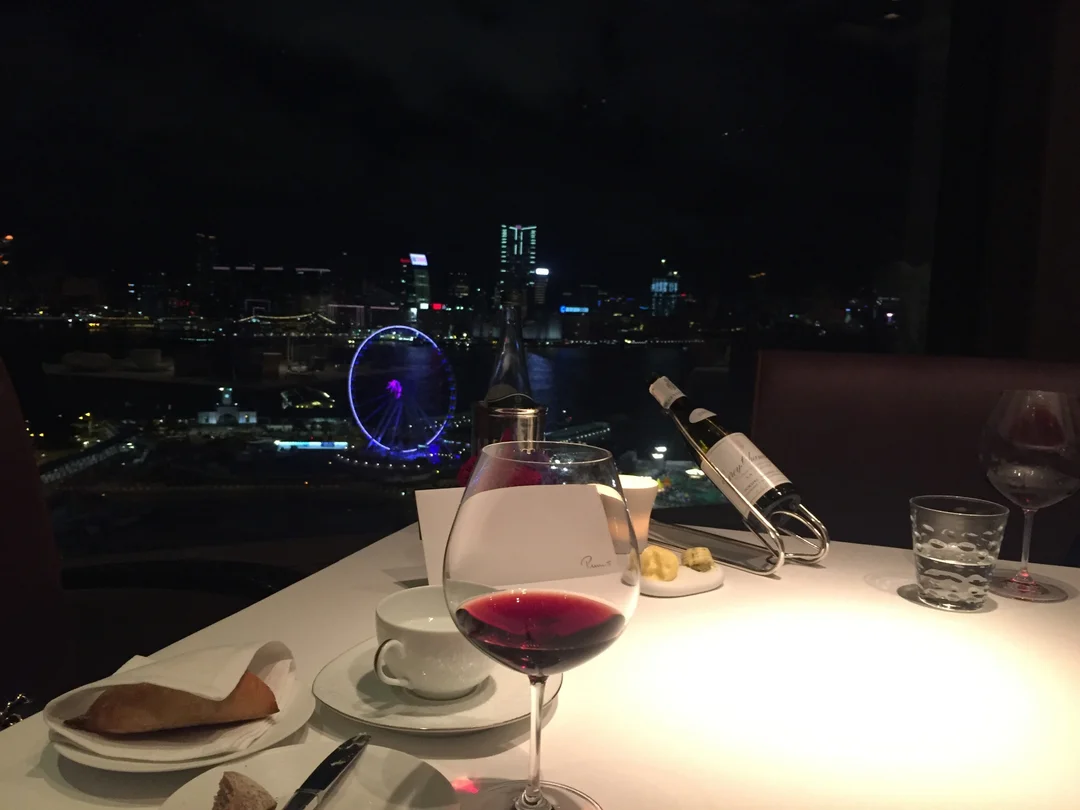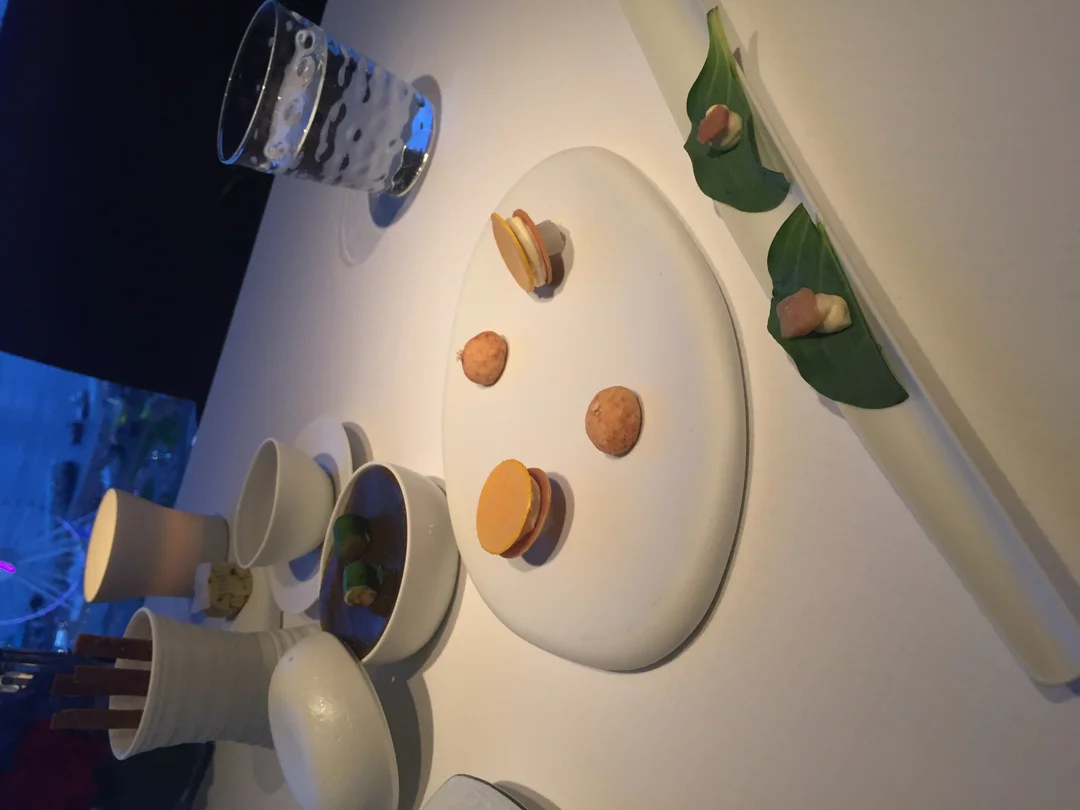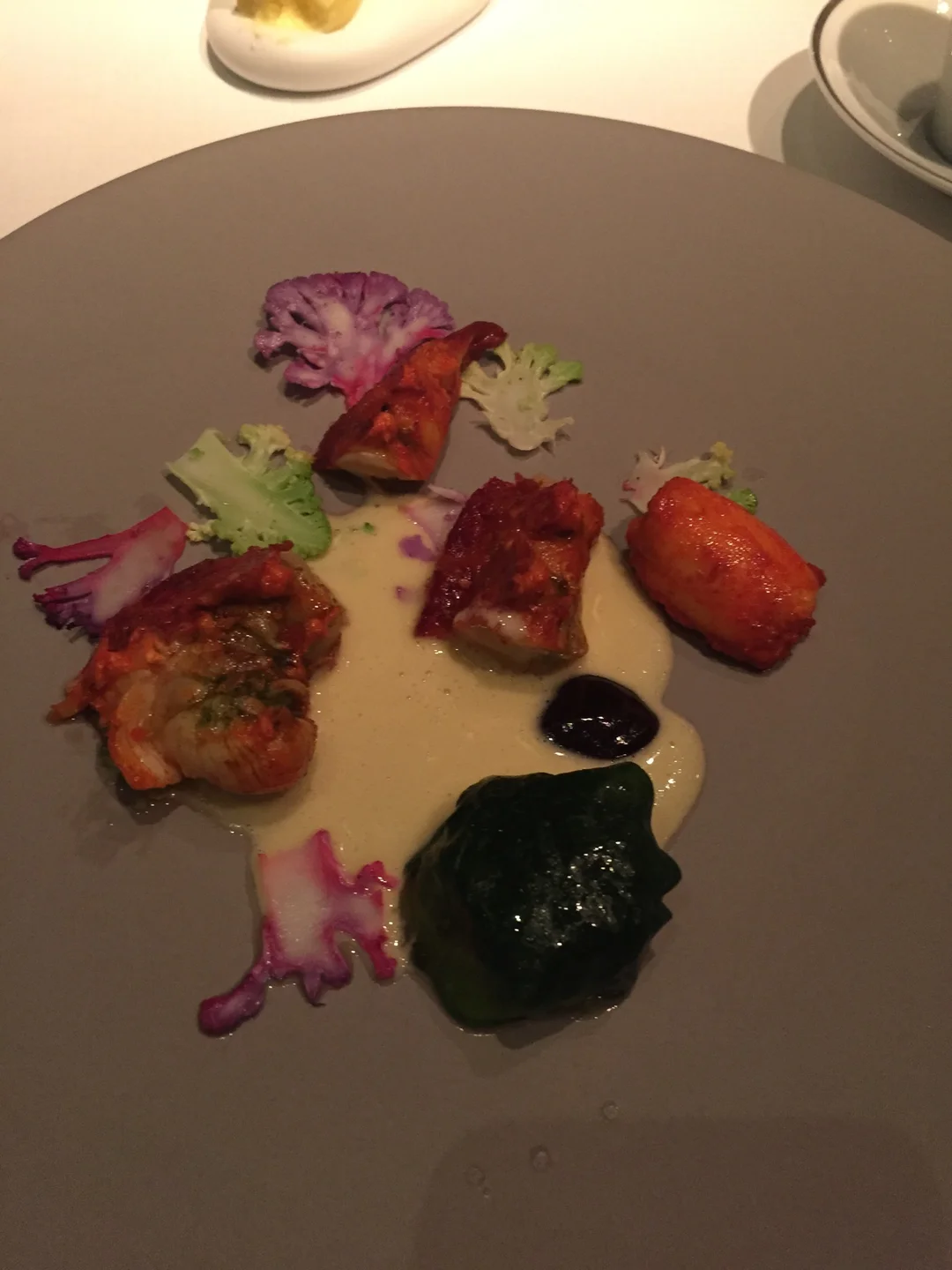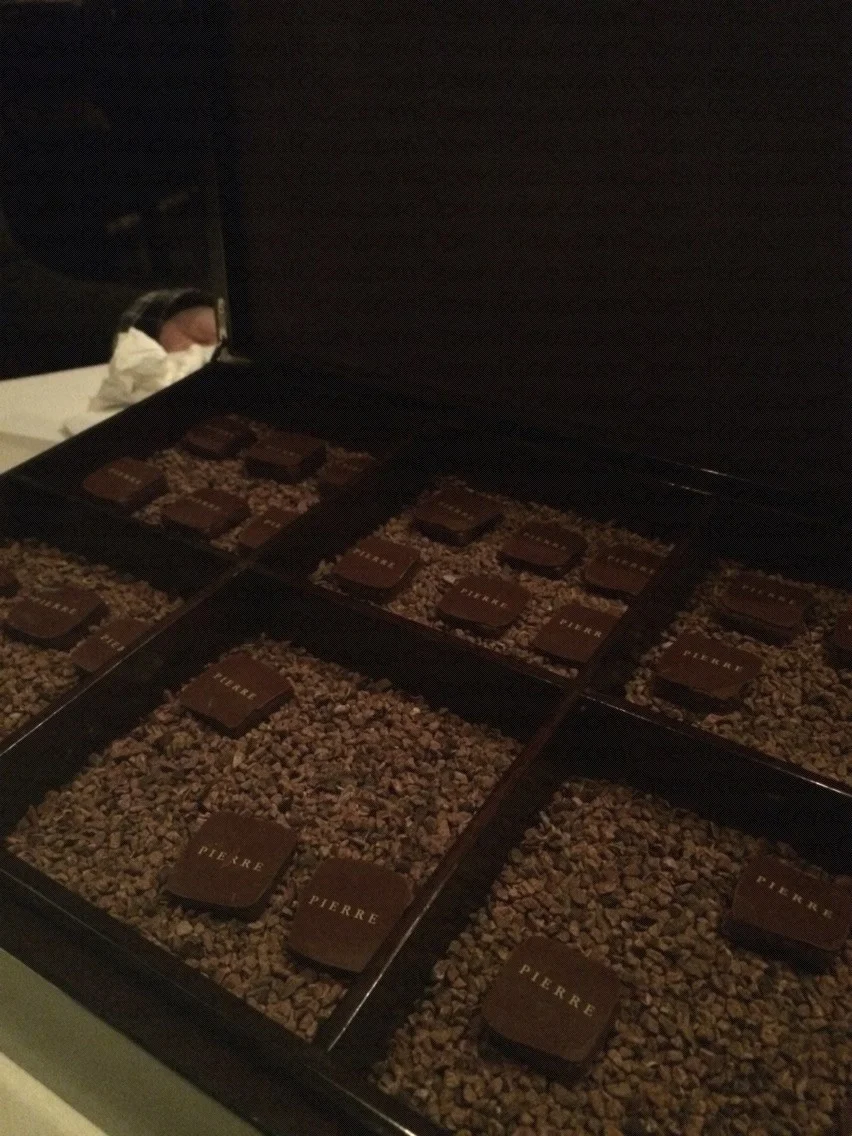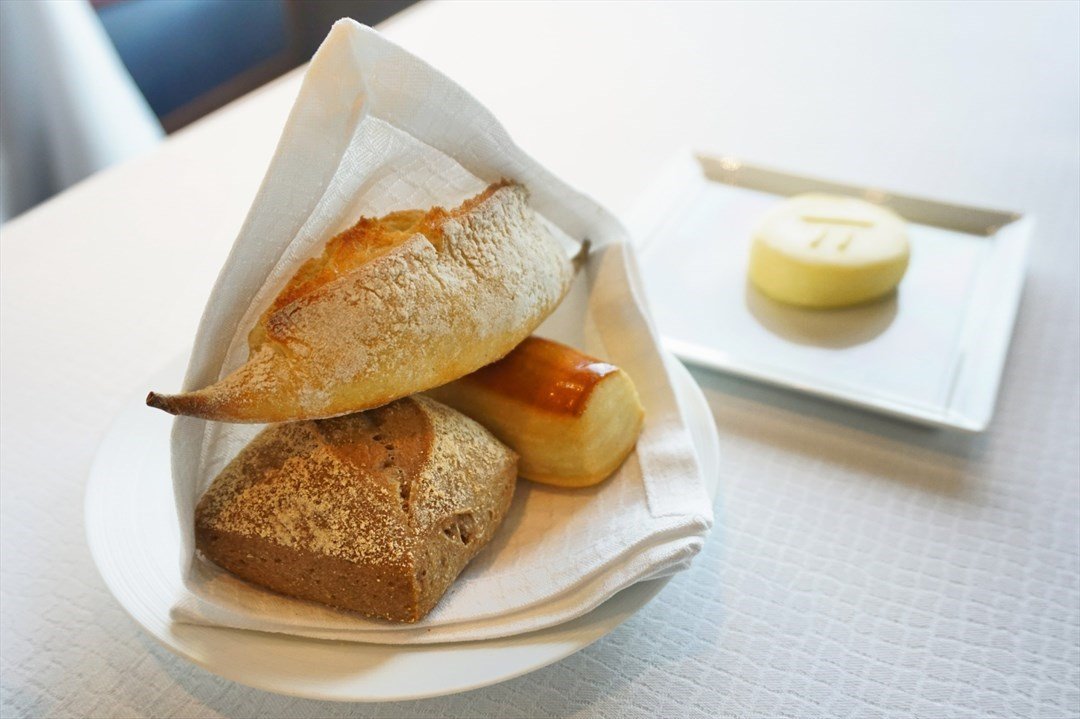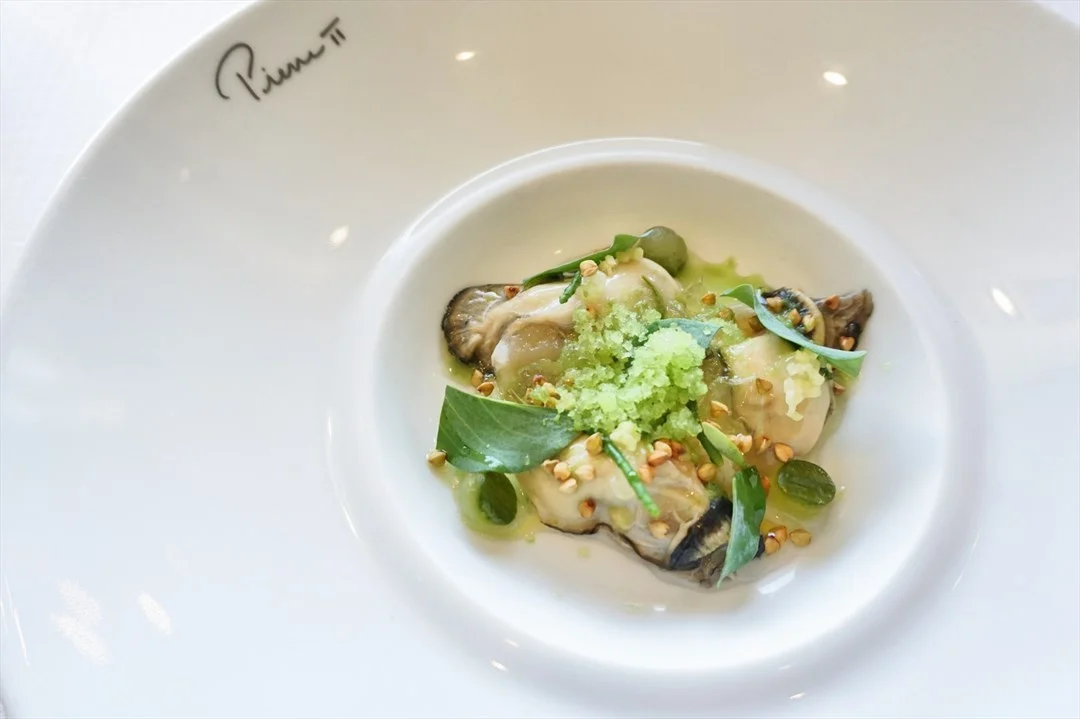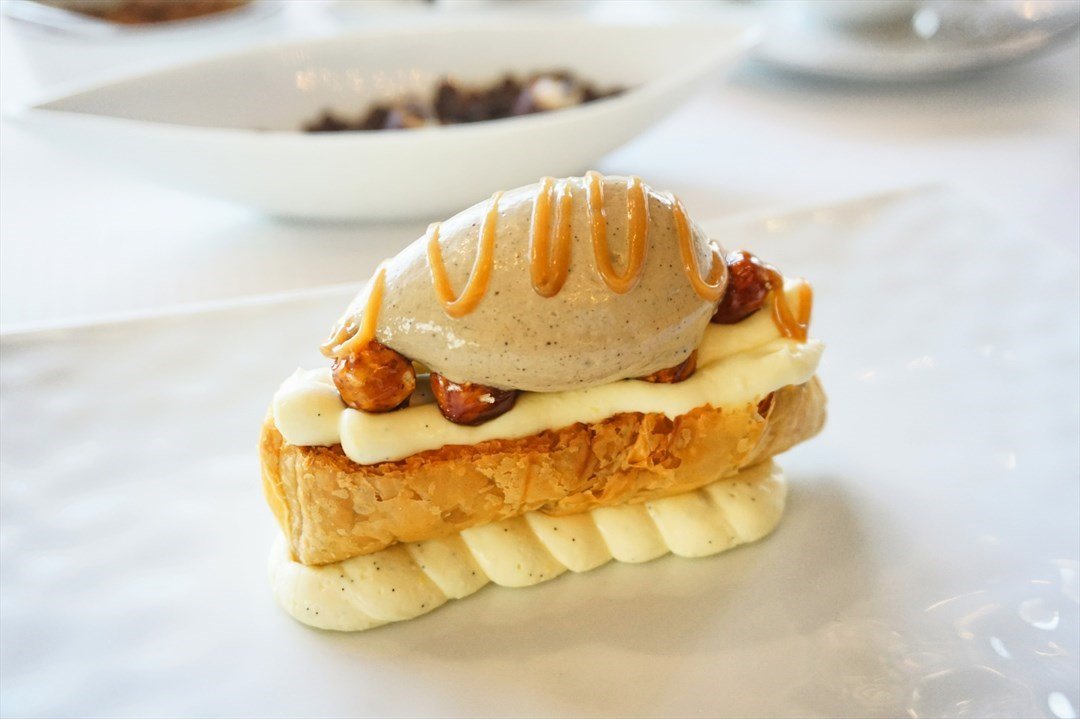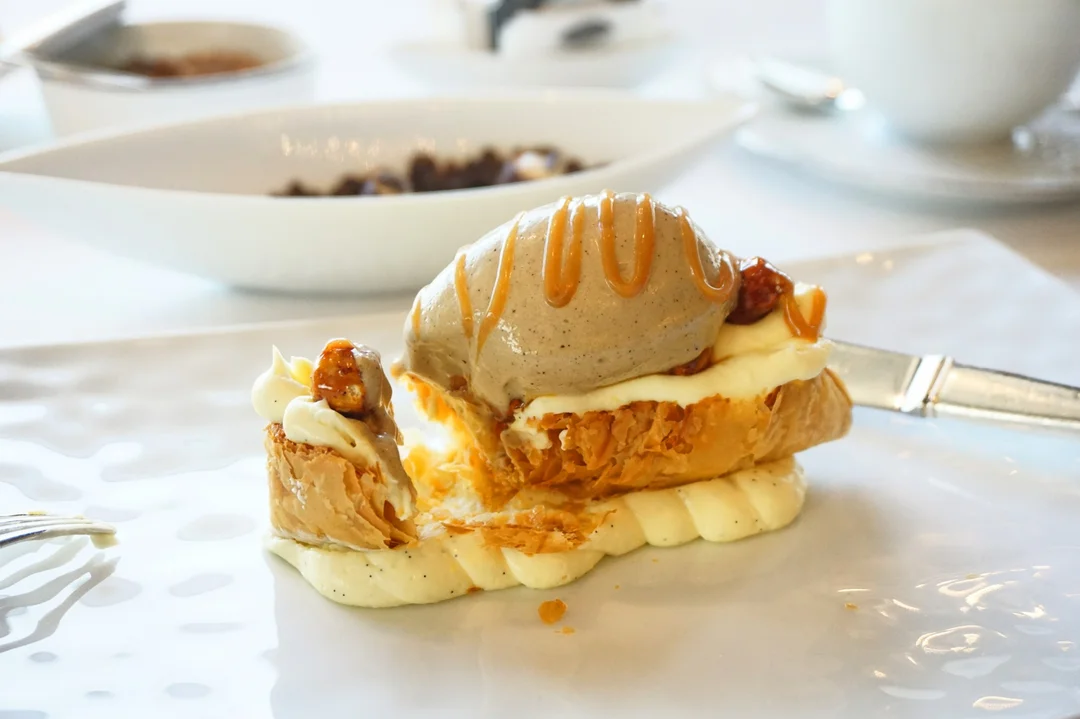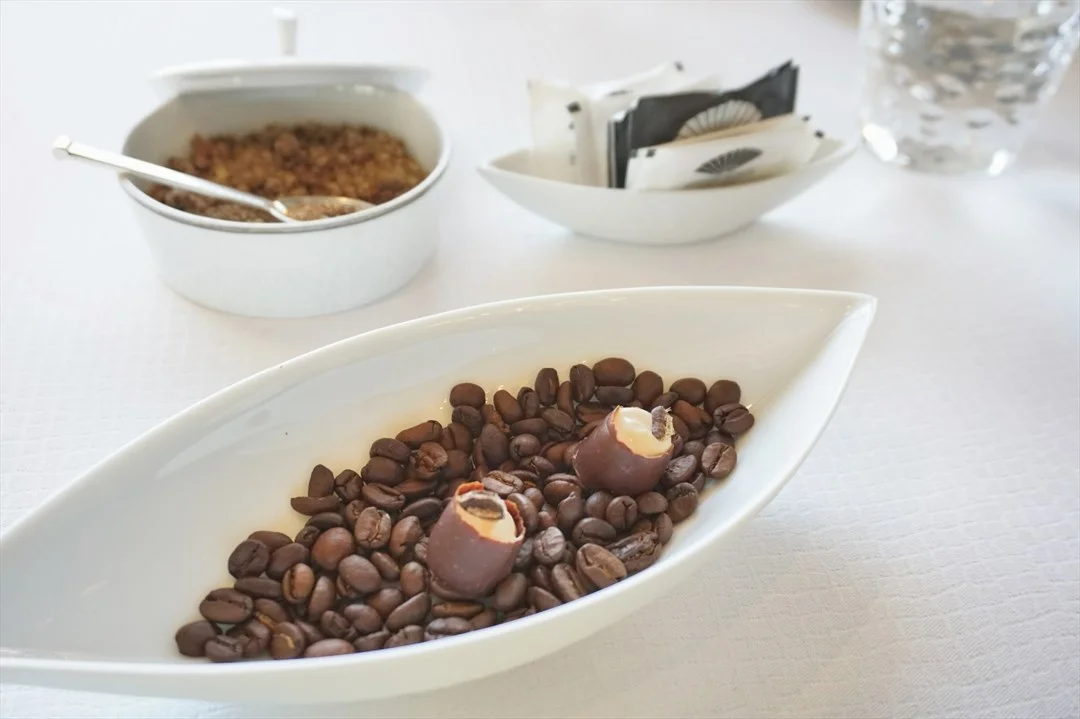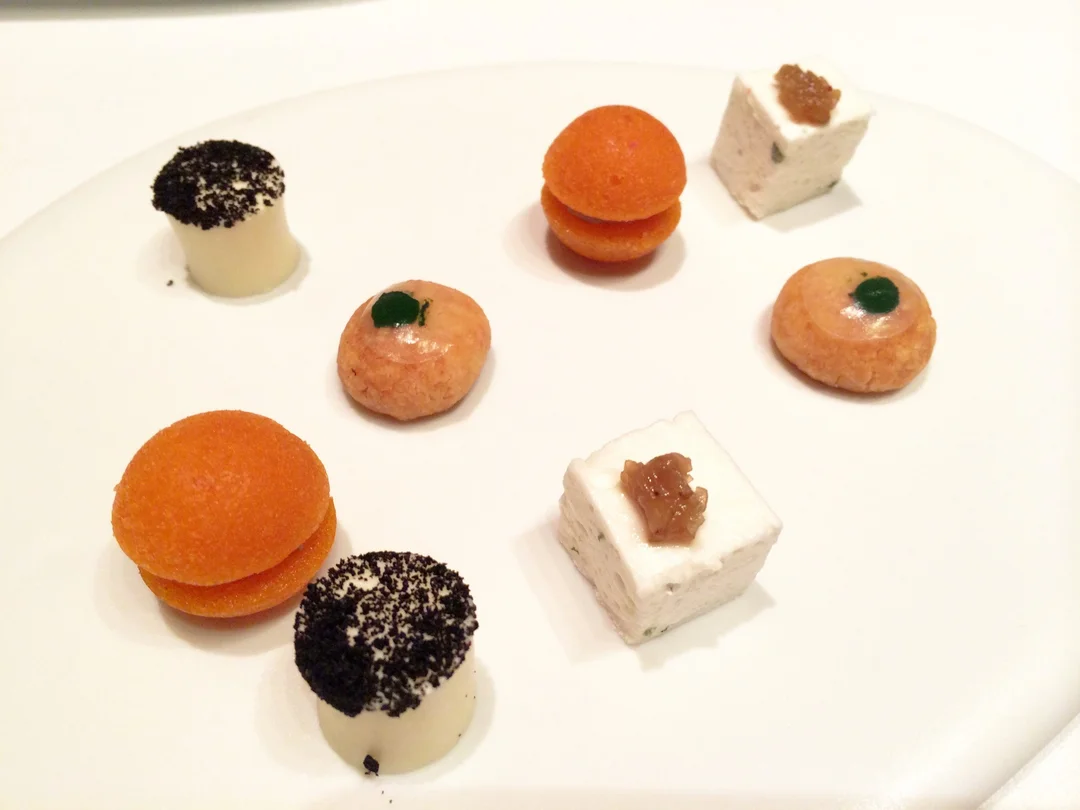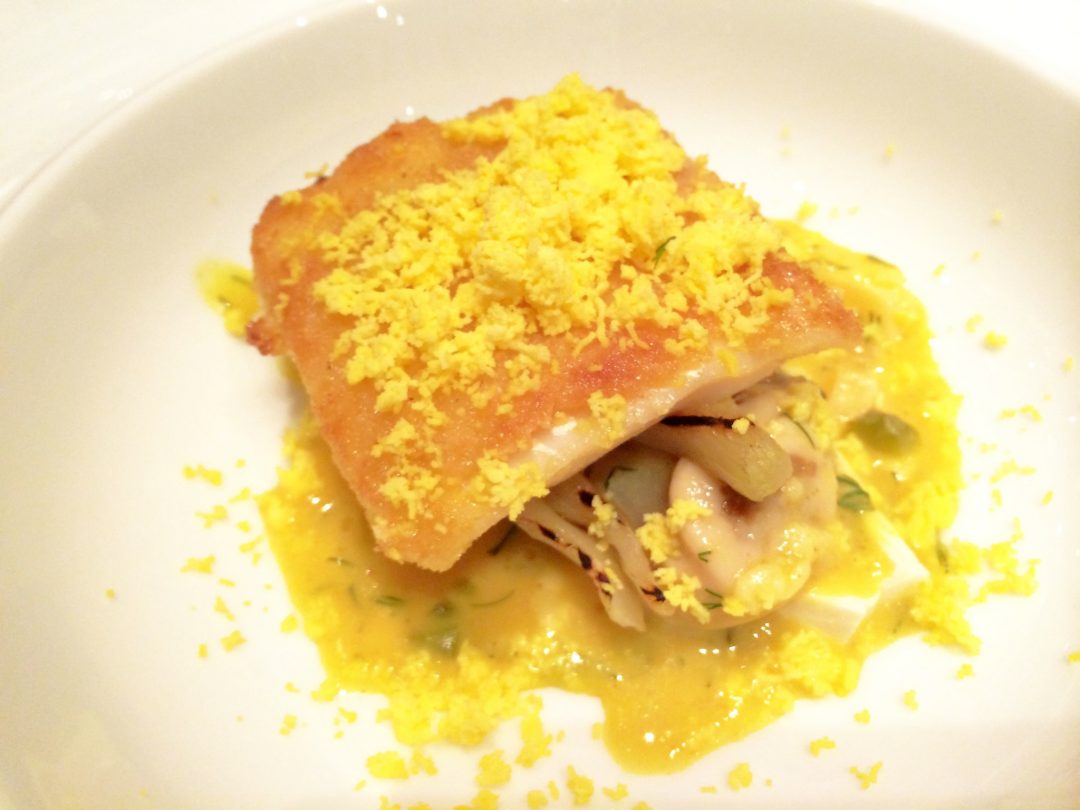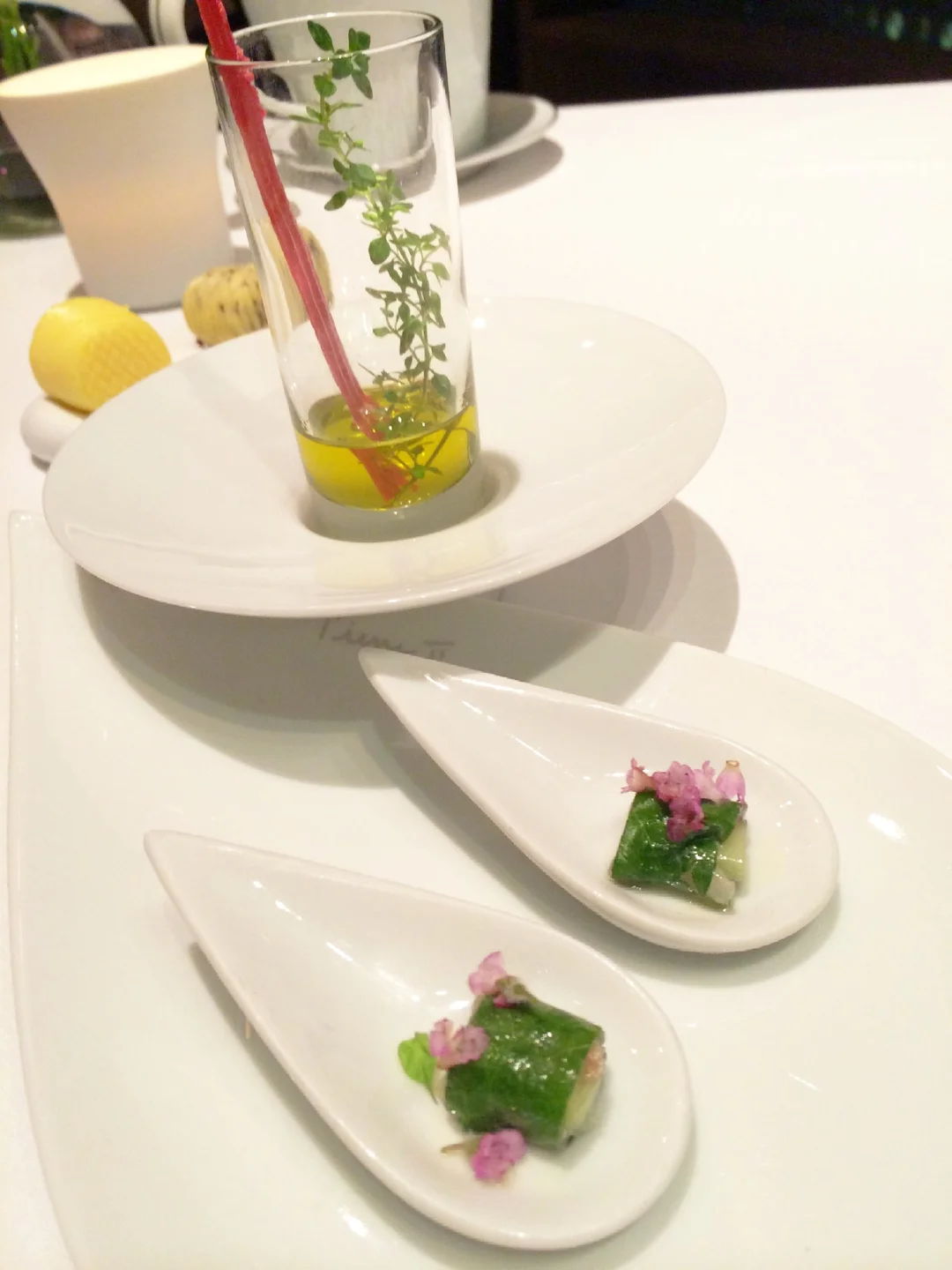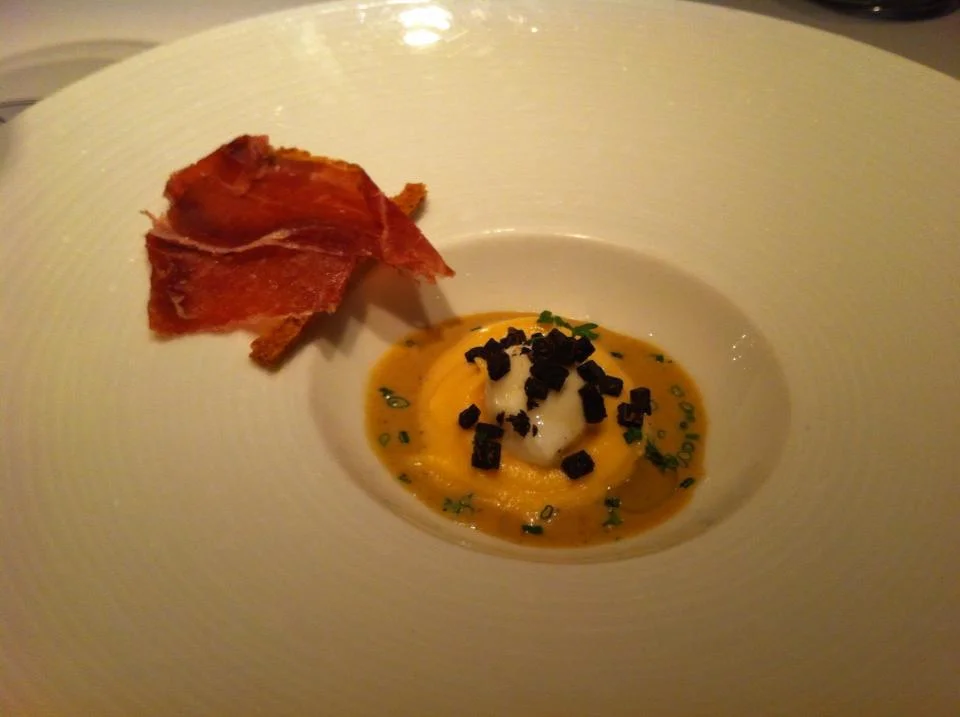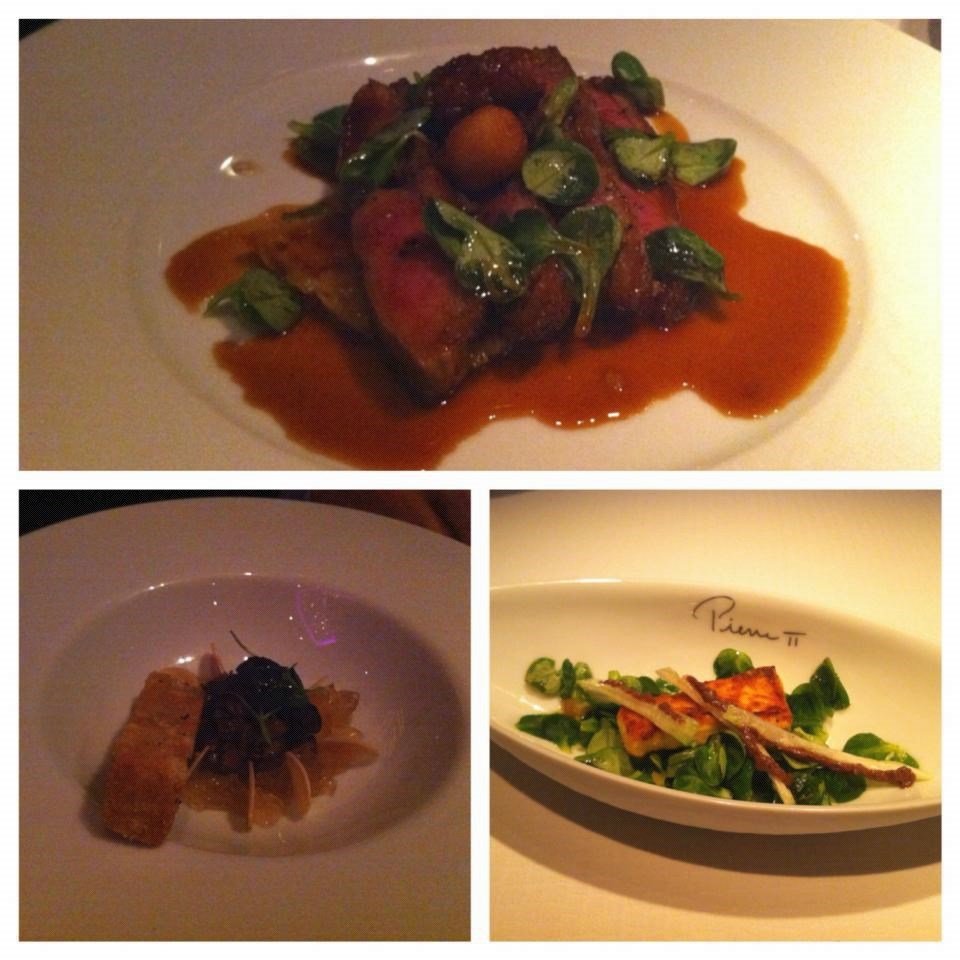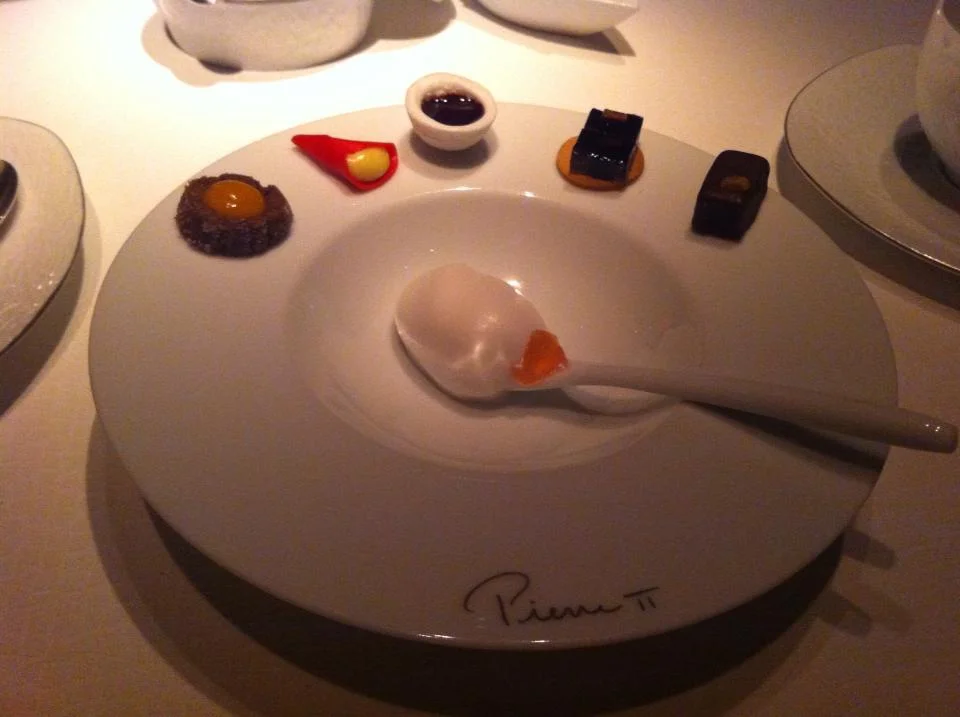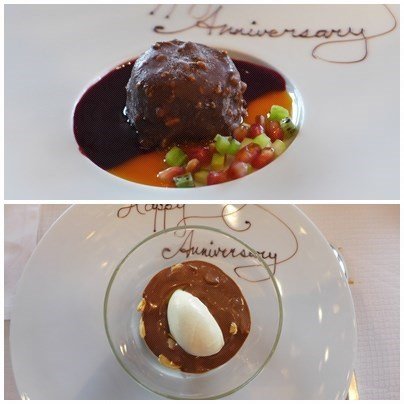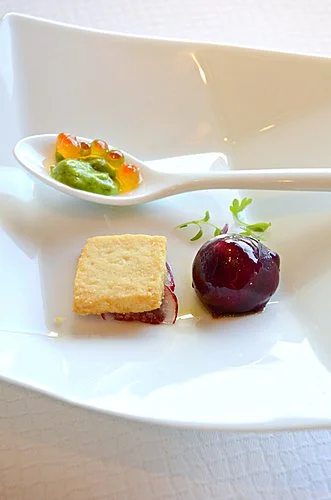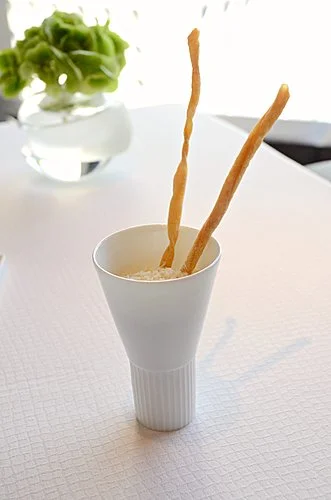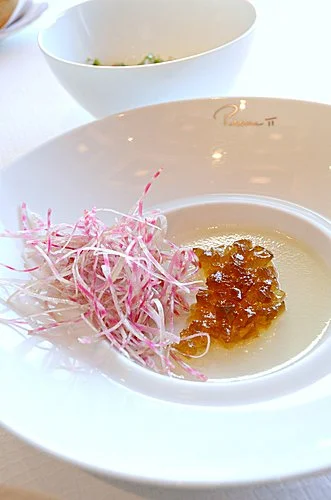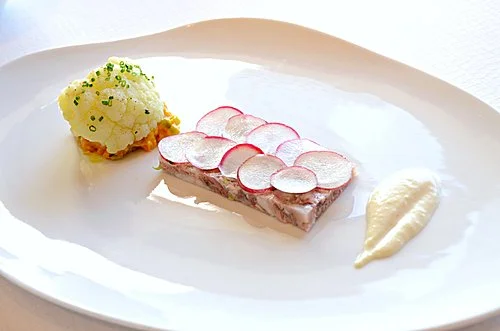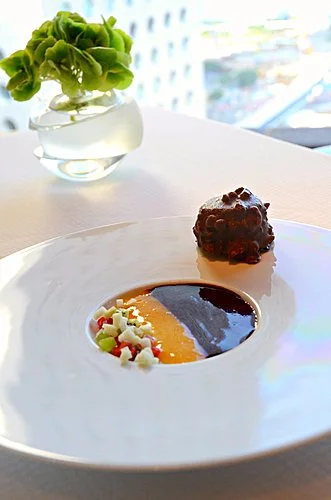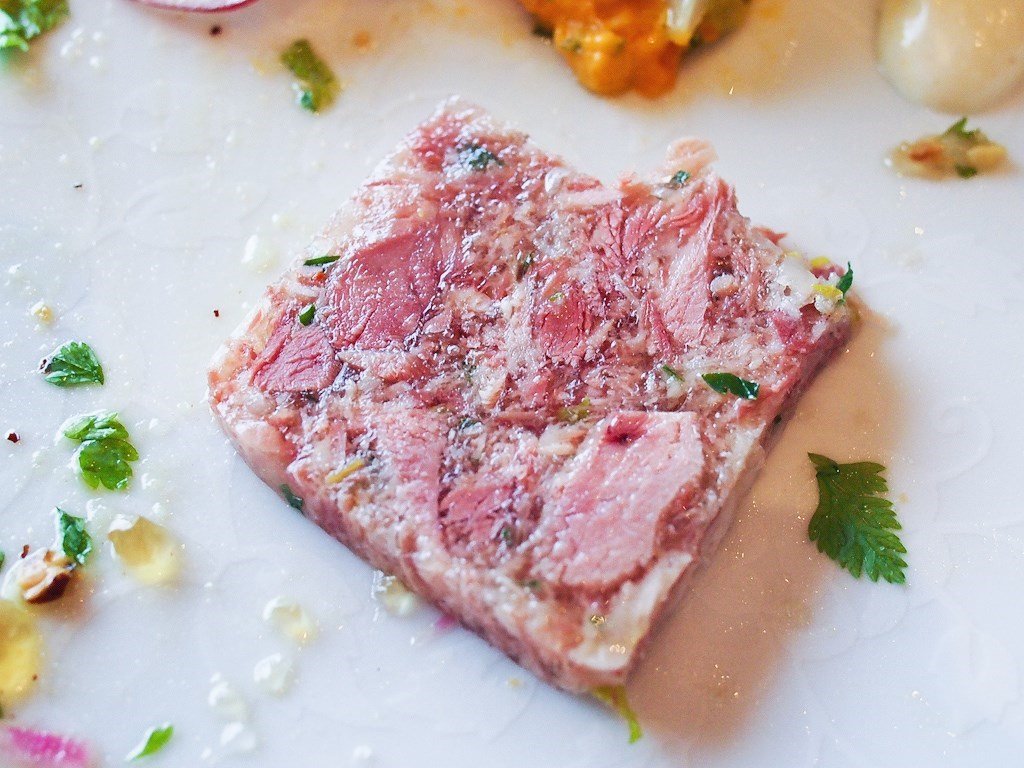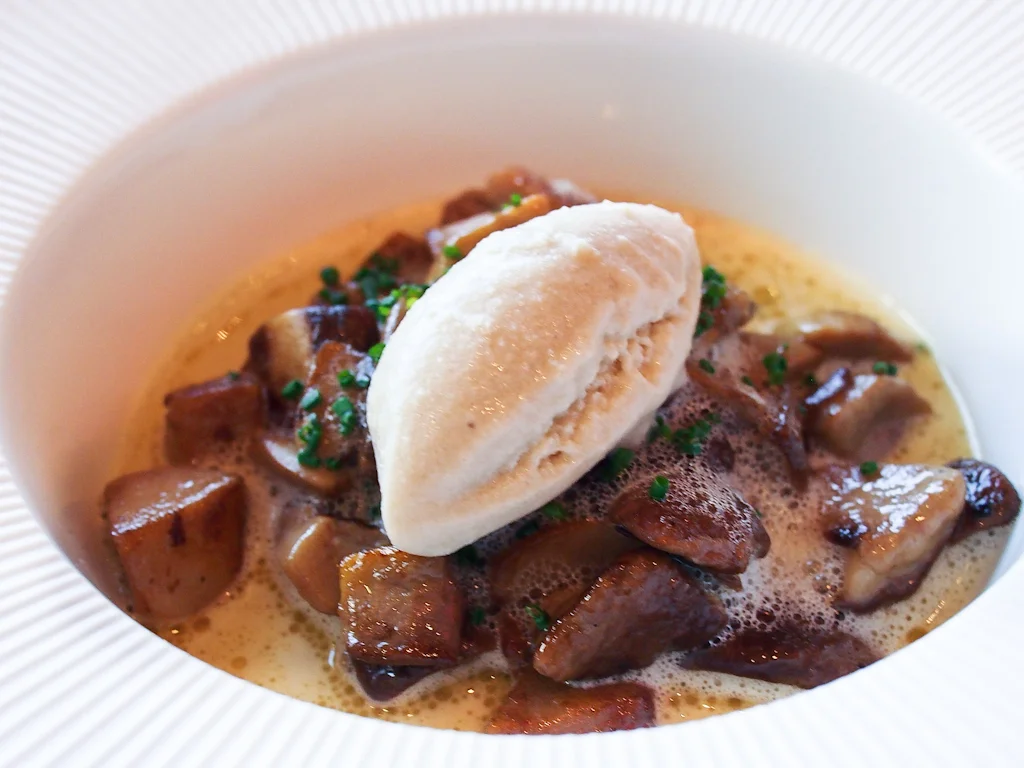Based on prior three dining experiences at Gagnaire's restaurant in Paris, I decided to give his Asian venture a try. Walking in, there is beautiful view of the bay over which the restaurant seems to levitate and the place is dark, decorated in black with accent mirrors. It feels like a date place.
There are two tasting menus and a short à la carte menu to choose from. The four-course tasting is an abridged version of the seven-course. Both have wine pairing options, which I recommend because, a. the sommelier's selections do pair well with the dishes, and b. the few gems on the wine list are not rare and priced around 2.5x auction.
The food philosophy is French with a combination of French and Asian ingredients. The best dishes generally stuck to French roots.
While this does not live up to Pierre Gagnaire Paris, there are enough food sparks to make Pierre Hong Kong worth a visit. If Pierre can overcome food inconsistencies, it'd clearly merit 2 stars.
Gallery Text:
1. Amuses-bouches: This was a set of fun little bites along the same lines as Gagnaire Paris. The black pudding with apple compote was a slightly meaty croquette ball. The brunoise with squid powder was a bit more than a palate cleanser. The beet chip in olive oil was the most harmonious combination with the sweet of the chip cutting the slight bitter of the oil. There was also a marshmallow made savory with shrimp powder, a cheese cracker, a yam, and goat cheese with beet gelée. To get to the Gagnaire standard, execution needs improvement. (I still remember Gagnaire's perfect tater tot on a toothpick in his amuses set over a decade ago.) To move to the San Sebastian 3 star standard, gain storied harmony and flavor development throughout the set.
There are only three places that I've ever been to (restaurant and retail included) where I remember the quality of the bread: the bread sticks at Daniel in NY, half the portfolio of Blue Oven Bakery in Cincinnati, and the mini-baguettes at Pierre Gagnaire in Paris. They have nearly the same mini-baguettes here: crispy and slightly fire kissed crust, doughy interior with just the slightest tinge of sour.
They also have the greatest compound butter in the world here. It's a beurre aux algues from Jean-Yves Bordier and it's one of the few beurre de barattes left in the world; they churn this butter in wood barrels by spinning milk in the barrel. It tastes like great Russian pressed caviar whipped with a great European butter. It's so good that I would trade my best-of-every vintage Italian olive oil source for a local supplier of this.
2. Yabbies with Osetra Caviar: Yabbies are large Australian crayfish. Here, they are poached just long enough to remove them from their shells whole, then served in that not-cooked-through state that allows the slightly-firmer-than-amaebi texture to come through. Under the Pouilly-Fuisse cream is a Japanese citrus gelée with grapefruit vacuoles. The whole dish is garnished with radishes, flowers, sugar crisps, and caviar. The play on textures in dish is really quite remarkable. You have the soft yabbies mixed with cream, then the gelatin elements as they break up in your mouth, crispy-fresh radish slices, crunchy sugar cracklin, and bursts of caviar and grapefruit sacs. The yabbies are pulled in different directions with each bite, from the traditional creamy shellfish to the citrusy shellfish and finally with that pop of brine from the caviar.
3. Hokkiado Scallop with Asparagus: The scallop is slightly overcooked, but benefits from the spinach puree (which gives it a green minerally character) and the scallop cream (which adds body). That green/white contrast is reflected also in the two colors of asparagus. The green has more mid-palate bite and astringency. The white is more mild; you get the mildly sweet vegetal finish of cooked asparagus before you swallow. Finally, there's a small roulade of black truffled chicken with scallop in the middle on two perfectly crisp crackers that reference one of the traditional preparations of Coquilles St. Jacques, sliced horizontally and layered with black truffles. This is an incredibly harmonious dish and were it not for the slight overcooking on the scallop, would have been the dish of the night.
4. Roasted Abalone with Foie Gras Soup: Nested atop braised leek, celery and fennel, the abalone is reasonably tender, but it has bite from being a small abalone. The foie gras is tinged with green curry and is probably a reference to crab back fat but constructed from earth. There's certainly a sense that each spoonful is like digging into sea mud in a good way. Julienned fresh celery strands add a bit of freshness, but it's still not quite balanced. This is the first of a few dishes that would have benefited from the omission of Asian influence. The green curry brings in an odd bitter that accentuates the worst aspect of foie gras, the part that's usually masked through careful deveining, salt, and cream.
5. Grilled Red Mullet with Tomato Relish: Very Mediterranean preparation that recalls a cross between ratatouille and bouillabaisse in flavor profile. Tomato, olive, artichoke and zucchini bring out the meaty character of the mullet; but the best part of this dish is the diced mullet that's barely torched on one side which contrasts so well with the roast pieces, the later being fleshy and briny to the prior's crunchy tang.
6. Smoked Pigeon Salad and Potato Soup: While it's still tender, smoking accentuates the gaminess on this bird. Fresh peas and salad greens offer minimal relief. The creamy potato soup has pieces of shredded pigeon and tomato on the bottom, which add depth and acidity.
7. Cheese Course: Three cheeses are presented, each with its own accompaniments that work well. The Gruyere comes across as creamier because of the white chocolate shavings and the shredded green beans are a fine textural go-between for flavor balance. The Fourme d'Ambert soup is rendered with cream and strained. It has beautiful layered overtones of blue cheese. The Moelleux du Revard is slightly mushroomy with a Camembert consistency. The caramelized pecans and fantastic spice paste (that's kind of like a modified achiote) really anchor cheese.
8. Grand Dessert: Having this at Gagnaire Paris made me look forward to the Hong Kong version. Sadly, too many of the small dishes were marred by Asian medicinal notes. The wild strawberries with grated Parmesan was sweet and savory, but missing the necessary balsamic to pull it together. I also question the choice of grated vs. shave Parmesan. The champagne granité with grapefruit is pulled in an overly sweet direction with the simple syrup on the bottom. The dragon fruit, cream, exotic citrus and tapioca dish had an odd Chinese medicinal aftertaste. The meringue with citrus and angelica seemed disjointed by the slightly bitter rhubarb that is angelica. The vanilla cream and panna cotta set was a happy play on the textures of crème anglaise. The chocolate cake with pistachio ice cream and blackberries was a classic winning combination.
-tastecompendium
 Video
Video





